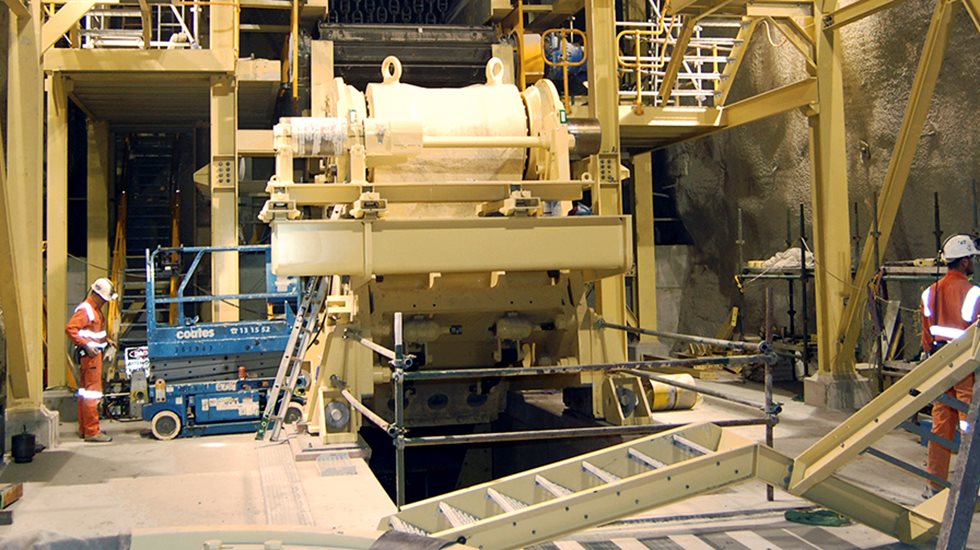Real estate in an underground mine is not cheap, so the design of primary crushing plants faces more limitations underground than on the surface.
However, the primary crushing and transportation of ore to the surface are often the determining factor that decides on the capacity of the mine.
The required capacity defines the size and type of crushing equipment and also the number of parallel crushers or plants required to meet the mine’s production rate. Most suppliers and EPCM providers have simulation and calculation tools for basic equipment and capacity selection.
Selecting the right crusher
Jaw crushers are the most common solution in underground applications when the throughput is less than 1,000 tons per hour, depending somewhat on the scalping solutions. Above 1,000 tph, primary gyratory crushers begin to look interesting, and after the throughput reaches 2,000 tph, jaw crushers are very rare, with the exception of a parallel plant layout. Capacity is also determined by the feed size and material type introduced to the plant, as well as the required product curve. In most cases, the first stage of crushing really has two functions: to get the material small enough to be transported out of the mine, as well as to get a suitable product curve for the next stage of comminution.
In either case, the top size of the material ends up typically in the range of 200 – 350 mm, which is good for belt conveyors and fits into most secondary crushers without causing process risks. To achieve this top size, the crusher setting is in the range of 200 mm or below, depending on the rock characteristics.
If a belt is not used in transporting the crushed ore out of the mine, the other method of transporting ore from underground applications is via skip hoist. Depending on the size of the skip, the ore being transported may need to be finer.
Picking debris out of the primary feed is always a challenge. If there is a belt after the crusher, it makes sense to place a magnetic separator there to get rid of at least the magnetic parts of unwanted materials. This way, it will not get transported to the next stage of comminution.
Underground mining methods mostly produce a feed that is finer than in a typical open-pit mine, resulting in higher capacity through the plant. However, surprises do happen, so be prepared to handle oversize feed material when required.
